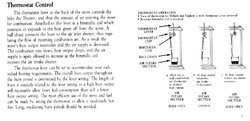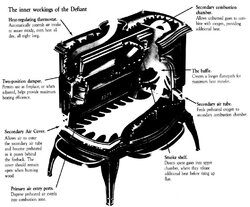I'm burning my non- cat VC Encore for the fist time this season and have a few questions about the burn temperature, this stove replaced an Upland 207 that I burned for years.
My stove top thermostat is reading 600-700 degrees with the draft control at its lowest setting and the recirculation damper closed; this seems quite high and is much hotter than I let the Upland get. Is this temp alight?
I sometimes hear a muffled clunk or metal expansion type sound from my chimney near wherre the stove pipe connnects, the chimney is a lined brick chminey. The sweep said it was in excellent shape late last season and that someone must have relined it properly before I bought the house. Is this just the metal expanding? I hear it most when the stove is just begining to fire.
Thanks for any responses.
Tom
My stove top thermostat is reading 600-700 degrees with the draft control at its lowest setting and the recirculation damper closed; this seems quite high and is much hotter than I let the Upland get. Is this temp alight?
I sometimes hear a muffled clunk or metal expansion type sound from my chimney near wherre the stove pipe connnects, the chimney is a lined brick chminey. The sweep said it was in excellent shape late last season and that someone must have relined it properly before I bought the house. Is this just the metal expanding? I hear it most when the stove is just begining to fire.
Thanks for any responses.
Tom




